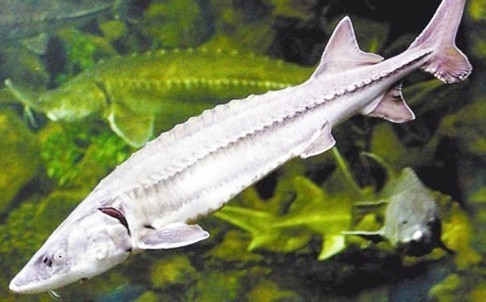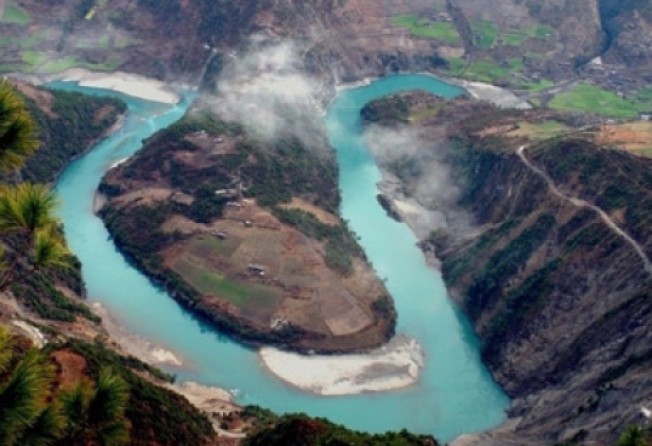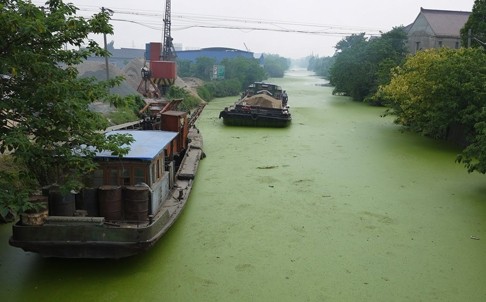
Death haunts China’s ‘angry river’: Scientists find 40 per cent of fish species gone from free-flowing Nujiang near Tibet
As government moves to kick-start stalled plan to build 13 dams over China’s final free-flowing river, scientists fret about impact on local biodiversity as overfishing, mining and construction works blamed for declining aquatic life.

Scientists scavenging for information on the genetic make-up of fish in China’s last free-flowing river, which runs from the western Chinese province of Tibet down to the Andaman Sea between Myanmar and Thailand, have found that close to half of the species on the Chinese side have vanished.
They made the shocking discovery when conducting a study on the DNA of aquatic life in the Nu river, which is still flowing freely as a plan to build 13 dams on it has been temporarily suspended.
The Chinese team claim to have detected just 46 remaining species, including three invasive species that are believed to have been illegally released into the water way by local farmers.
This would represent a drop of 40 per cent from historical records, according to their paper published
this week in the journal Scientific Reports.
The scientists found that recent human activity was mostly to blame for the lack of diversity. The study was led by Professor He Shunping at the Chinese Academy of Sciences’ Institute of Hydrobiology in Wuhan, in central China’s Hubei province.
The scientists said they believe overfishing, mining and construction projects are the chief culprits behind the declining number of species.
Beijing funded the largest-ever programme to preserve and catalogue the DNA of fish in the river in 2012. At the time, records showed it was home to 77 fish species. Over the following two years, groups of scientists collected more than 1,000 DNA samples.
Also known as the Salween, the Nu river now enjoys unique status after the only other free-flowing river in China, the Yarlung Tsangpo, also located in Tibet, had its status changed by the construction of a hydropower station this year.
The Nu flows for 2,800 kilometres, snaking its way from snow-capped peaks in western China to the fertile flatlands of Southeast Asia.
Unlike most other major rivers in the country, no dams have been built there as fears that they could trigger earthquakes have kept such plans shelved for years.
The name of the waterway roughly translates from Putonghua as “angry river” due to its surging torrents.
It is estimated to have power-generation capacity in excess of 420 megawatts, or twice that of China’s famous Three Gorges Dam, the world’s largest power station that straddles the Yangtze and resulted in the displacement of 1.3 million people and the flooding of archaeological sites.
In recent decades, the fish in the Nu river had been “severely threatened” by environmentally destructive activities including the construction of small hydropower stations, the authors wrote in their paper.
But the worst may be still to come.
“The impending construction of thirteen dam cascades along the Nujiang [jiang is the Chinese word for “river”] main stem in the coming years poses a new threat that will worsen the situation for the fish [there],” the scientists wrote.
The Chinese government now seems to be approaching the project with greater trepidation.
The ambitious plan to build 13 dams was first announced in 2003. But due to concerns about temblors and the astronomical cost of financing such a project in remote mountainous areas, former premier Wen Jiabao put the project on ice the following year.
Two years ago, the central government got it rolling again, partly out of a desire to reduce emissions of fossil fuels and greenhouse gases. But an official launch date was never announced.
Public opinion has divided into two opposing camps.
Environmentalists have argued that the dams would spark an ecological disaster in China, and that many local people would lose their homes to flooding.
Supporters say the dams would generate money to lift more of the neighbouring population out of poverty and improve infrastructure like roads and power lines.
The project’s likely impact on local biodiversity has also triggered rich debate.
After the construction of Xinanjiang dam in eastern China’s Zhejiang province back in the 1950s, the number of fish species in the affected river dropped from 107 to 83 within four decades, according to one study.
But it is hard to pin down just how much of this was caused by the dam, and how much by other factors like industrial pollution and overfishing.
While most scientists agree that fish species with migratory habits would be negatively affected by a dam, some believe the loss would be compensated for as other, more adaptive species started to thrive.
Admitting that their work is not done, the researchers behind the latest study said they may have missed some species due to the limits of their sample areas.
Moreover, historical records could have accidentally exaggerated the previous levels of biodiversity by, for example, mistaking the same fish at different stages of development as different species.
Nonetheless, the fact that species are rapidly vanishing from this key waterway seems to be beyond doubt.
